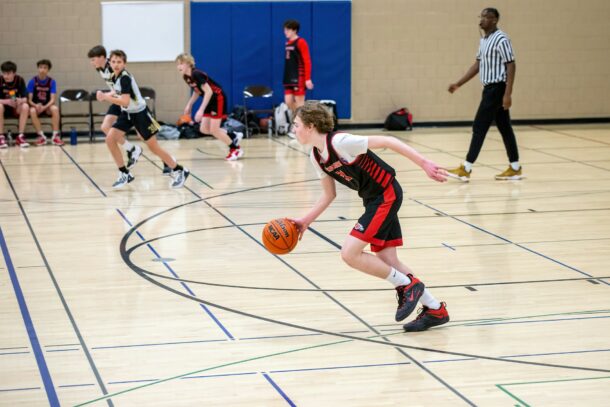As a veteran coach with years of experience on the basketball court, I firmly believe that preparation is key to success in any sport. As Benjamin Franklin famously said: “By failing to prepare, you are preparing to fail.” When it comes to basketball, there’s one aspect that often separates the winners from the losers—the ability to navigate and excel in basketball end-of-game scenarios.
These critical moments can make or break a team’s chances of victory, and as coaches of youth basketball teams, it’s our responsibility to ensure our players are well-equipped to handle the pressure and make the right decisions. In this post, we’ll explore five essential questions every coach should ask before diving into those nail-biting, adrenaline-pumping end-of-game situations. By addressing these questions, we can empower our young athletes to face these moments with confidence, poise, and a strategic mindset, ultimately increasing their chances of triumph. So, let’s dive in and unlock the secrets to mastering basketball end-of-game scenarios!
Basketball End-of-Game Scenarios: 5 Questions to Answer
As a coach, you and your staff need to know the answers to the following questions ahead of any basketball season to prep for those end-of-game scenarios.
Question 1: Should you foul or go for a steal/turnover if your team is behind? If fouling, whom and when?
Rationale: This question addresses the strategy of whether to intentionally foul the opposing team to stop the clock and extend the game or to go for a steal or turnover to regain possession quickly.
Possible Answers: It depends on the time remaining, the score difference, and the defensive capabilities of your team. If there is sufficient time, fouling the opponent’s weakest free-throw shooter or the player with the ball can increase your team’s chances of getting the ball back. However, if your team excels at creating turnovers, going for a steal or trap might be a viable option.
Question 2: Should you foul when your team is up by 3 points to avoid a potential 3-pointer? If so, when?
Rationale: This question addresses the decision of whether to foul the opponent intentionally to prevent them from attempting a game-tying 3-pointer.
Possible Answers: It depends on the time remaining, the defensive capabilities of your team, and the likelihood of the opponent making a 3-pointer. Foul only when the opposing team is attempting a 3-pointer, ideally before the shot is released, to prevent them from tying the game.
Question 3: What should your team do after getting a rebound/turnover or after a made shot? Should you call an immediate timeout, push the ball up and call a timeout, or disregard the timeout and go for a score?
Rationale: This question addresses the decision of whether to call a timeout immediately, push the ball up the court and then call a timeout, or play through without a timeout to capitalize on the momentum.
Possible Answers: It depends on the game situation, time remaining, and the need for a strategic adjustment. If your team needs to regroup, set up a play, or make substitutions, calling an immediate timeout might be appropriate. However, if there’s an opportunity for a quick score in transition, pushing the ball up the court and then calling a timeout can catch the defense off guard. In some cases, if the flow of the game is favorable and momentum is on your team’s side, it might be best to let the players play and go for a score without using a timeout.
Question 4: Should your team hold for the last shot or take the first good scoring opportunity when trailing by 1, 2, or tied?
Rationale: This question explores the strategy of whether to be patient and hold the ball for the last shot to ensure your team has the final possession or to take the first good scoring opportunity available.
Possible Answers: It depends on the time remaining, the offensive strengths of your team, and the quality of the available shot. If time allows, it might be wise to run a well-executed play and look for the best possible shot rather than rushing. However, if there’s a clear and open opportunity early in the possession, taking the shot might be a suitable option.
Question 5: Do you have plays prepared for various locations on the court, considering the time left in the game?
Rationale: This question emphasizes the importance of having well-rehearsed plays from different areas of the court, taking into account the time remaining in the game.
Possible Answers: Yes, it is crucial to have a variety of plays designed for different scenarios, such as sideline inbounds, baseline inbounds, and half-court sets. These plays should consider the time remaining and provide options for quick scores, perimeter shots, or set plays to exploit defensive weaknesses. Having a diverse playbook allows your team to adjust and execute effectively, regardless of the location and time left on the clock.
Related: Youth Basketball End of Game Situations
Resources:
If you found this useful, don’t forget to check out additional blog posts at TeachHoops.com. Also, check out TeachHoops on Facebook, Twitter, Instagram and YouTube.








